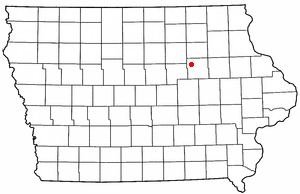
Moving to Cedar Falls, Iowa: A Comprehensive Relocation Guide
Considering moving to Cedar Falls, Iowa? This charming college city offers University of Northern Iowa atmosphere, historic character, and exceptional quality of life. With approximately 41,000 residents in 2025 (metro 168,000+ with Waterloo), Cedar Falls combines small-city charm with educational excellence and Northeast Iowa’s most livable destination.
Demographic Profile to Consider If Moving to Cedar Falls:
Cedar Falls’ 2025 population is approximately 41,000 residents, forming a twin-city metro with Waterloo totaling over 168,000 in Black Hawk County. The median age is around 30 years, influenced by the University of Northern Iowa. The population is approximately 90% White, 4% Black or African American, 3% Hispanic, 2% Asian. Cedar Falls features the UNI campus, historic downtown along Main Street, College Hill neighborhood with beautiful historic homes, and serves as the twin cities’ more affluent, residential community. The city attracts academics, UNI employees, professionals, and families seeking college-town atmosphere with small-city safety. Cedar Falls appeals to educated professionals valuing quality of life, historic character, and university culture. The community emphasizes education, historic preservation, quality of life, and maintaining small-city character. Find trusted local services for moving, living, and working in Cedar Falls.Cedar Falls Relocation Directory
Cost of Living to Consider If Moving to Cedar Falls:
Cedar Falls offers exceptional affordability for a university city. Median home values range from $190,000 to $280,000 in 2025, providing tremendous value with college amenities and top-ranked livability. The median household income is approximately $58,000. Rental properties average $850 to $1,300 monthly, with student housing abundant. Iowa has no state income tax on retirement income; individual income tax is progressive 0.33%-8.53%. Property taxes are moderate. Overall cost of living is very low for the quality of life and university presence, making Cedar Falls highly attractive for UNI employees, retirees, families, and young professionals seeking college atmosphere with Iowa affordability. The city provides exceptional value with Panthers athletics and historic charm. Housing costs create accessibility including beautiful historic homes.
Economy and Job Market:
Cedar Falls’ economy centers on the University of Northern Iowa (major employer with faculty, staff, operations), manufacturing, and healthcare. UNI provides employment stability. John Deere has operations in the area. UnityPoint Health-Allen Hospital serves the region. Viking Pump and other manufacturers operate. Typical industries include education, manufacturing, healthcare, and services. The economy benefits from UNI stability and manufacturing base. Career advancement opportunities exist in education and manufacturing sectors. The job market attracts academics, manufacturing workers, and healthcare professionals.
Education:
Cedar Falls Community School District serves city students with Cedar Falls High School offering quality education. The University of Northern Iowa is a comprehensive public university offering strong programs with renowned teacher education, business, and music. Hawkeye Community College serves the area. The concentration of higher education creates intellectual atmosphere. The schools benefit from the educated UNI community influence and quality college-town character.
Recreation and Lifestyle:
Cedar Falls offers charming historic downtown along Main Street with local shops, restaurants, Sturgis Falls Celebration (major summer festival), and walkable small-city atmosphere. The College Hill neighborhood features stunning Victorian and historic homes. Residents enjoy UNI Panthers athletics (FCS football and basketball), Cedar Valley Nature Trail, George Wyth State Park, and Ice House Museum. The lifestyle emphasizes college culture, historic preservation, outdoor recreation, and small-city connections. The four-season Iowa climate enables varied activities. The community values education, historic character, quality of life (consistently ranked among America’s most livable small cities), and maintaining charm despite growth. Living in Cedar Falls means embracing college-town character, accepting geographic isolation (Northeast Iowa location), and prioritizing quality of life and community while enjoying Panthers athletics, historic Main Street charm, and exceptional affordability creating Iowa’s most charming college town where UNI meets Victorian elegance.
Healthcare and Services:
Cedar Falls residents access comprehensive healthcare through UnityPoint Health-Allen Hospital (Cedar Falls) and facilities throughout the twin cities. The regional healthcare infrastructure serves Northeast Iowa with quality medical care.
Transportation:
Cedar Falls is accessed via U.S. Route 20, U.S. Route 218, and various corridors. Waterloo Regional Airport provides limited commercial service. MET Transit operates bus service throughout Cedar Falls and Waterloo. Most residents use personal vehicles. Downtown Cedar Falls offers walkability. The city is bike-friendly with trails. Typical travel times to major metros are substantial (Cedar Rapids 1 hour, Des Moines 1.5 hours).
Conclusion:
Moving to Cedar Falls in 2025 offers charming college-town living with University of Northern Iowa, historic character, and exceptional quality of life. The city’s combination of Panthers athletics, Victorian architecture, and consistently top-ranked livability makes it ideal for academics, families, retirees, and those seeking Northeast Iowa’s finest destination where UNI Panthers meet Main Street charm and small-city perfection defines Iowa’s most livable college town.

